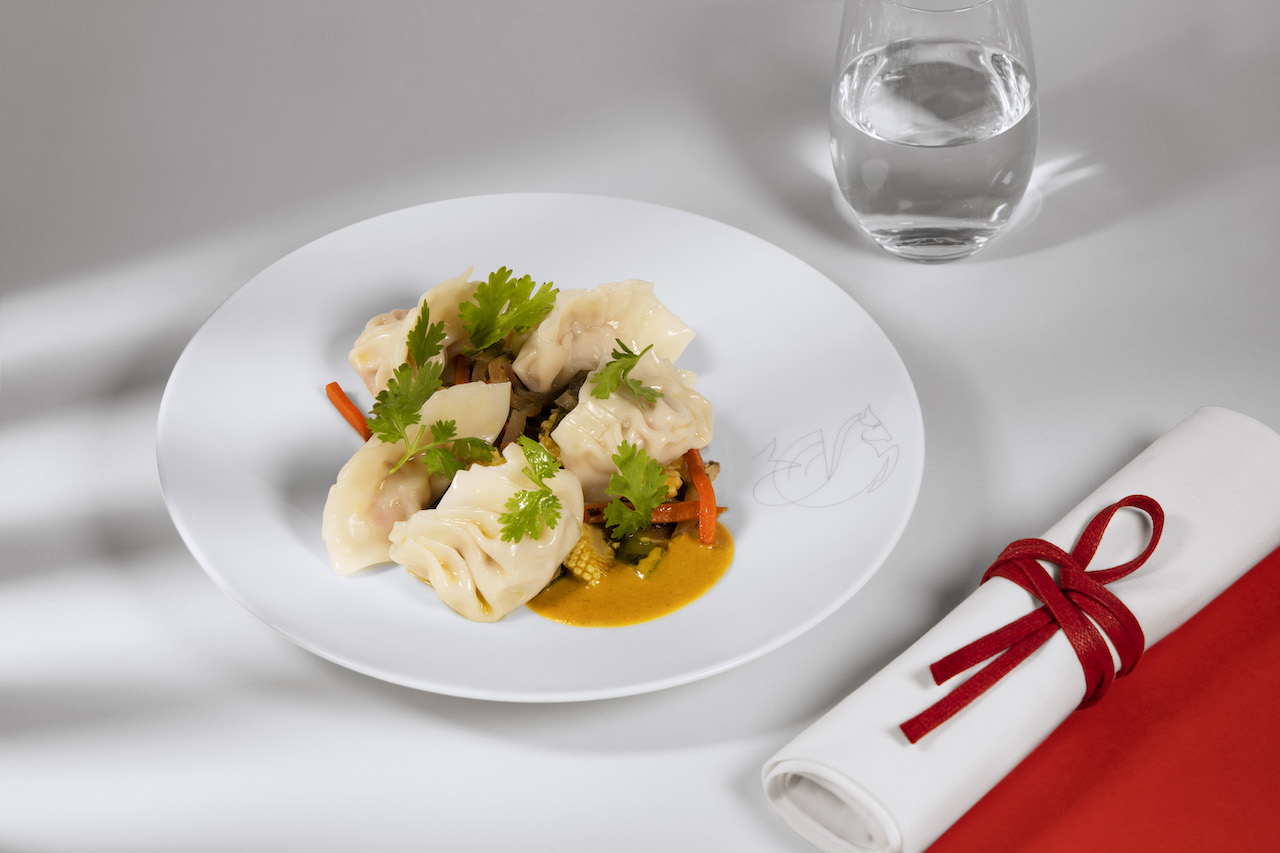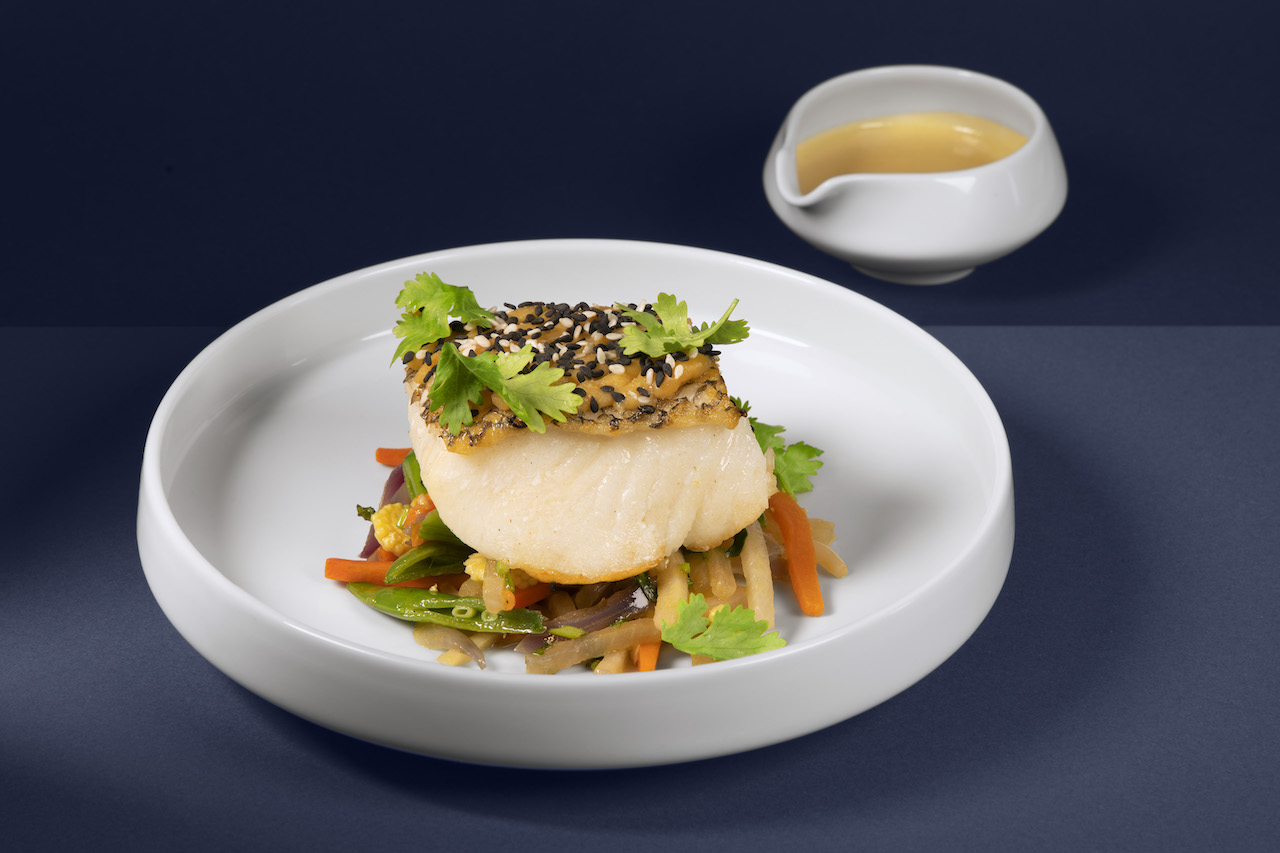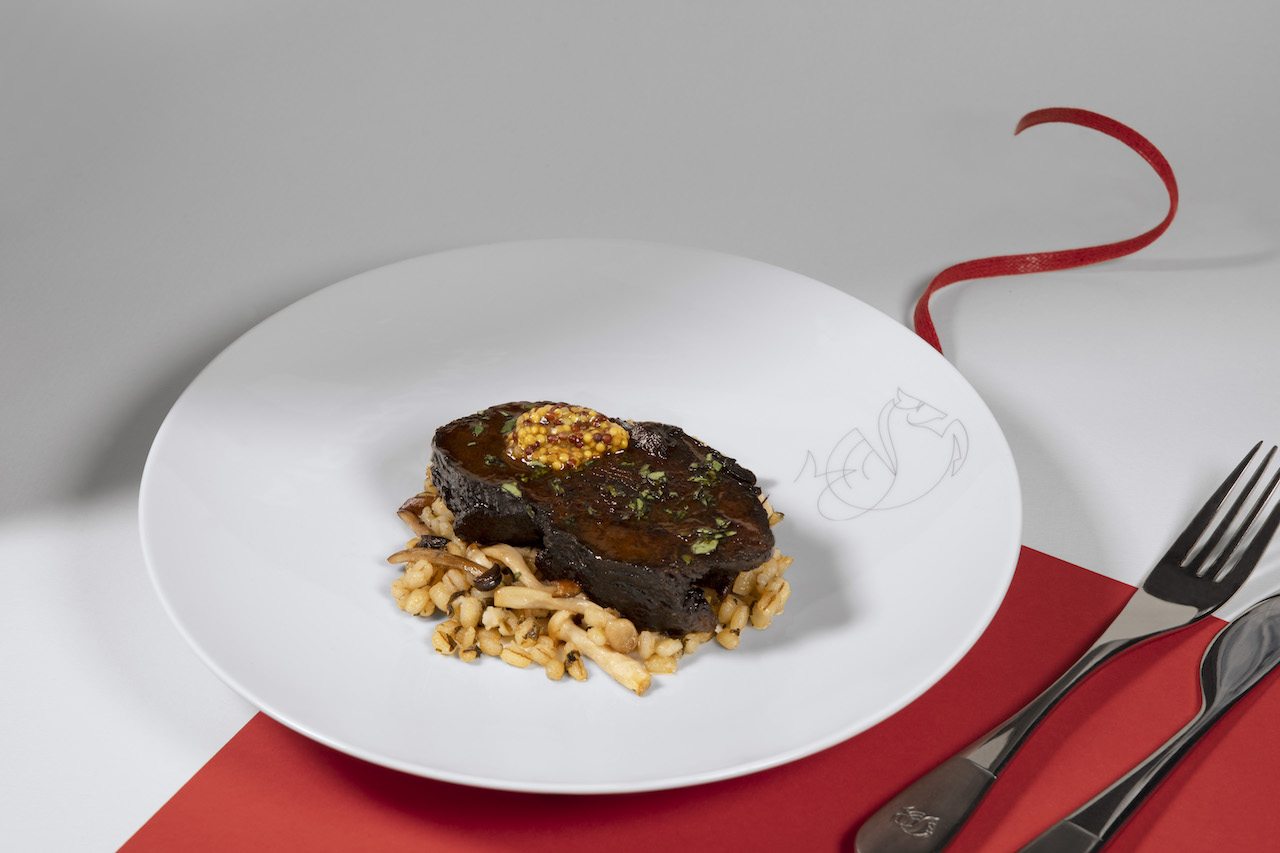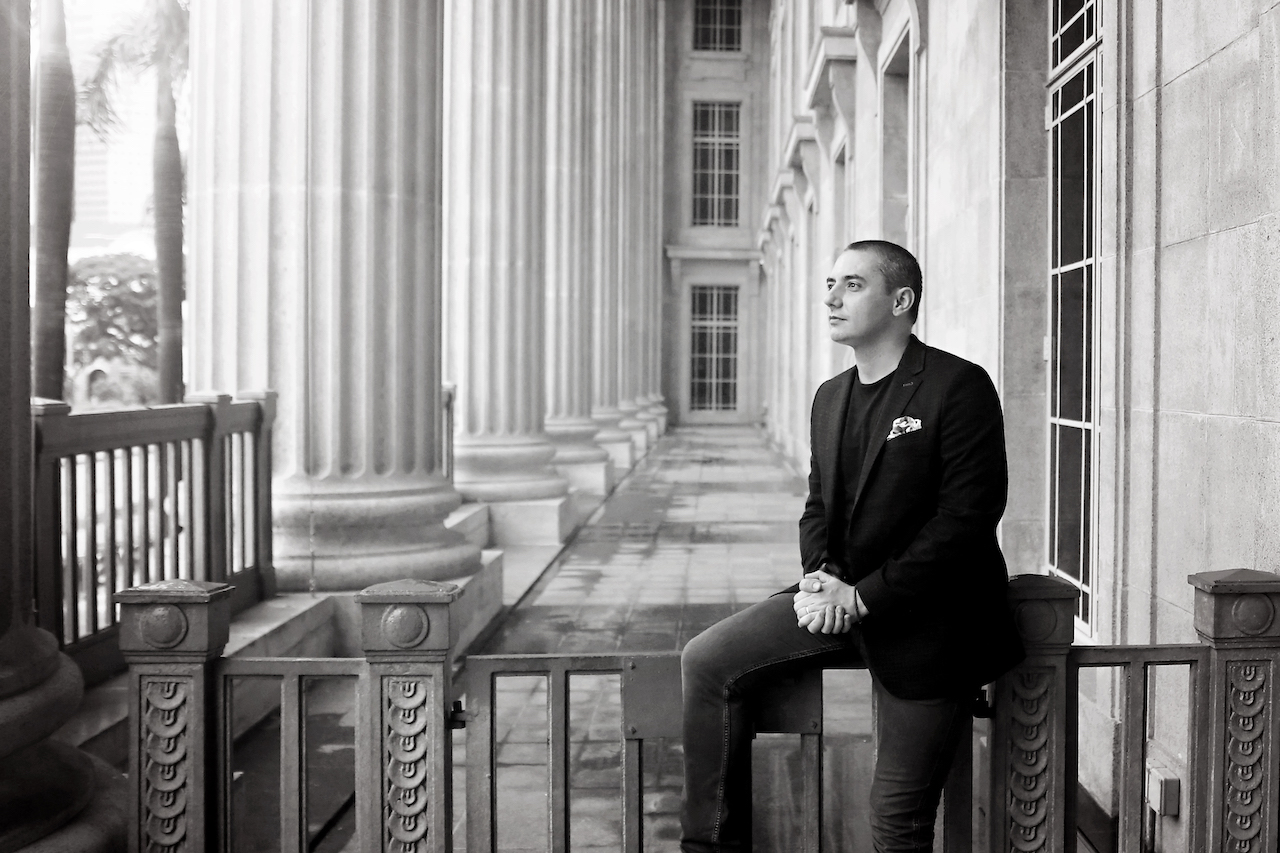In July 2023, Air France renews its collaboration with Julien Royer, chef-owner of Odette at National Gallery and Claudine at Dempsey Hill. Odette was awarded three Michelin stars as well as ranked No.14 on The World’s 50 Best Restaurants list in June. The fine dining restaurant was also named Best Restaurant in Asia at the World’s 50 Best’s 2023 awards ceremony held in Valencia, Spain.

Travellers will be able to enjoy Royer’s new and original dishes served in Air France La Première and Business cabins. The chef created 18 dishes, including vegetarian options, which will be rolled out progressively over the year.
For instance in July and August 2023, and January and February 2024, La Première cabin passengers will be served king prawn ‘dumplings’ filled with braised leeks and served with wok-fried vegetables, and laced with a spicy sauce made with ginger, galangal and touch of curry. Or a duo of wild and koshihikari rice tossed in aromatic oil and served with tangy tomato and subtly spicy sauce with espelette chilli.

In Business class (September and October 2023), you will get to savour Kyoto miso baked black cod with wok-fried vegetables and yuzu sake beurre blanc. Or gnocchi glazed in a Kâmpôt pepper sauce paired with spinach and eggplant puree. All these are exclusive for Air France passengers departing from Singapore to Paris.
We find out from the top chef how he produced the recipes for the airlines and the challenges he faced.
What’s the process like when creating meals for Air France? What do you have to pay special attention to in terms of flavours and textures?
The first thing is to be aware of the challenges on board, which is mainly the reheating process and the large number of people we have to serve – about 65 persons on Business Class. We need to keep in mind that not all the products can be reheated nicely. The humidity of the ingredients is very important. You need to choose products with high fat or high collagen content. You need to choose products that usually can cook very slowly – meaning braising or cooking over low temperature. If you use too much of a lean cut, for example chicken breast or fish with not enough fat and collagen content – it will be very dry.

The other thing that you have to keep in mind is that you lose a lot of perception of your palate when you are in the skies. We had the chance to try the same recipe in normal conditions on the ground versus five minutes later in a compressed pressurised cabin – at the SATS facility in Singapore. It’s the same dish: braised beef short ribs with puree of carrot and passionfruit with a bit of jalepeno.
When we were outside (in normal conditions), it’s flavourful and nice. It ticks all the boxes – it’s hot, well-seasoned and the texture is nice. But when we taste the same dish in the pressurised cabin, it seems like there’s not enough seasoning, ginger, salt etc.. It really changes the perception. So we need to pump up the flavour – by bringing up the level of acidity, sourness, spiciness and savouriness.

Not everything is possible. It’s very challenging to do something tasty up there (in the plane). So we work with all these considerations to do something nice. And something not too complicated in terms of flavours.
How does it feel to be one of the 17 chefs collaborating with Air France? Did you discuss with any of them about the recipes or share your experiences?
It’s a great honour to be part of the panel of chefs which includes Ann-Sophie Pic to Alain Ducasse and Mauro Colagreco. And to represent France on board, and try to represent what gastronomy is all about. I’m glad to say that what is served on board Air France is one of the best.
We were lucky to meet with the chefs in Lyon in January 2023 during the SIRHA Eurexpo Lyon France. Air France invited all the 17 chefs to come together to share their experiences. So on that occasion we were able to speak about the different challenges, about the new ideas and trend of vegetarian dishes on board. It’s useful to know that the challenges are shared by many, and what do you do to overcome them and come up with ideas and solutions.

What are some of the things you’ve learnt from this experience?
At the end of the day, you have to cook something with your heart. The dishes shouldn’t be over complicated. And sometimes less is more. It’s better to have simple flavours that work well rather than be too creative and conceptual.